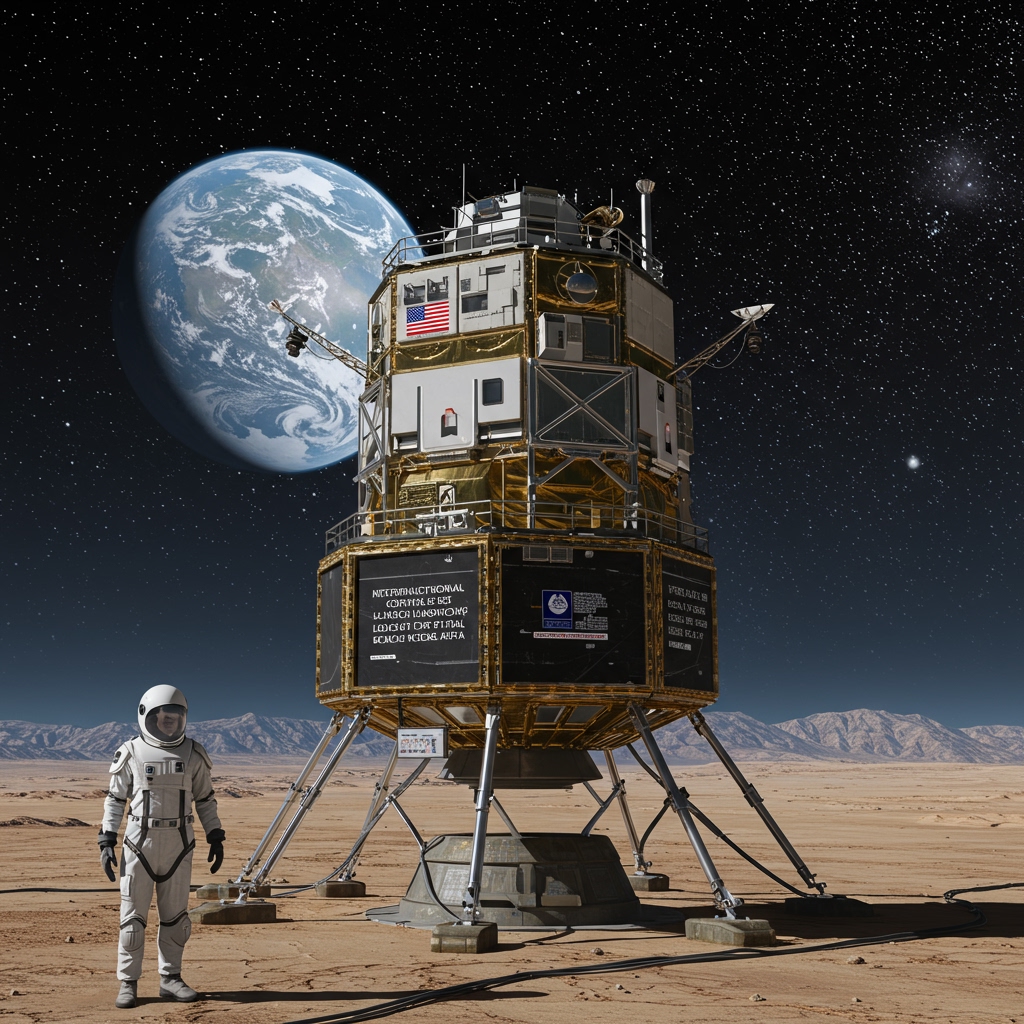International Consortium Confirms Key Lunar Base Module Launch Window
CAPE CANAVERAL, FL – An international consortium comprising leading space agencies and a private aerospace firm has officially announced the launch window for a foundational element of future lunar operations. The European Space Agency (ESA), Japan Aerospace Exploration Agency (JAXA), and the private firm Astrotech Systems today confirmed the targeted launch period for the crucial Lunar Base Module Alpha. This mission is designed to deploy core infrastructure essential for the establishment of a future international lunar habitat.
The launch is now scheduled to take place between March 15 and March 30, 2026. This specific two-week period represents the culmination of extensive planning and technical coordination among the partner entities, selected based on orbital mechanics, launch vehicle readiness, and lunar landing site conditions. The lift-off is slated to occur from the historic Launch Complex 39A (LC-39A) at the Kennedy Space Center in Florida, a site steeped in the history of human spaceflight.
The Mission: Lunar Base Module Alpha
The Lunar Base Module Alpha is envisioned as one of the initial key building blocks for a sustainable human presence on the Moon. While specific technical details of the module’s capabilities remain under wraps for proprietary reasons, it is understood to contain fundamental systems necessary for long-duration lunar operations. This likely includes elements for power generation and distribution, potentially early forms of environmental control, or foundational structural components that future habitat modules will connect to. Its successful deployment and activation are critical precursors to subsequent crewed missions aimed at inhabiting the lunar surface for extended periods.
The module’s design reflects a collaborative effort, leveraging the unique expertise of each partner. ESA brings decades of experience in developing complex space infrastructure and scientific payloads. JAXA contributes its proficiency in lunar surface operations and advanced robotic technologies. Astrotech Systems provides its heavy-lift launch capabilities and expertise in rapid mission integration and execution, typical of the agile private aerospace sector.
A Decade in the Making: Consortium Formation and Planning
The journey to this launch window announcement has been one of intense international cooperation and strategic foresight. Discussions leading to the formation of this specific consortium began several years ago, driven by a shared vision of returning humanity to the Moon, not just for fleeting visits, but for establishing a permanent, research-focused outpost. Formal agreements solidifying the partnership between ESA, JAXA, and Astrotech Systems were signed in the late 2010s, setting the stage for joint development and planning for missions like the deployment of Lunar Base Module Alpha.
Months of detailed technical coordination, interface definition, and risk assessment have preceded today’s announcement. Engineers and project managers from all three partners have worked closely to ensure compatibility between the module, the launch vehicle, and the planned lunar landing site. Site selection on the Moon was a rigorous process, considering factors such as solar illumination for power, potential access to resources like water ice, and geological interest for scientific research. The chosen site, details of which are expected to be revealed closer to the launch date, is critical for the long-term viability of the planned habitat.
The Launch Vehicle: Astrotech Systems’ Titan V
The responsibility for delivering the Lunar Base Module Alpha to translunar injection rests with Astrotech Systems’ Titan V heavy-lift launch vehicle. The Titan V is one of the most powerful rockets currently in development by a private entity, designed specifically for large payloads destined for geosynchronous orbit, interplanetary space, and lunar missions. Its selection for this critical mission underscores the consortium’s confidence in Astrotech Systems’ launch capabilities and reliability.
Launching from LC-39A adds another layer of significance to the mission. This launch pad has been the starting point for iconic missions ranging from the Apollo program’s flights to the Moon to Space Shuttle missions and, more recently, launches by other private space companies. Its infrastructure is well-suited for heavy-lift vehicles, and its operational history provides a backdrop of proven performance and logistical support essential for a mission of this complexity.
Significance for the Future of Lunar Exploration
Project leaders from the consortium emphasized the profound importance of this mission. In a joint statement, they highlighted that the successful deployment of Lunar Base Module Alpha marks a significant step towards achieving the ambitious goal of establishing a permanent human presence on the Moon. This infrastructure is not merely a research outpost but is intended to serve as a nucleus for expanding lunar activities, potentially supporting resource utilization, advanced scientific research, and eventually, serving as a stepping stone for missions further into the solar system.
The project aligns with broader international efforts to return to the Moon and build a sustainable lunar economy and research ecosystem. It showcases the growing convergence of public agency goals and private sector innovation in pushing the boundaries of space exploration. The collaboration between ESA, JAXA, and Astrotech Systems serves as a model for future large-scale space projects, demonstrating how diverse partners can pool resources and expertise to achieve complex objectives that would be challenging for any single entity to undertake alone.
As the March 2026 launch window approaches, attention will turn to the final stages of module assembly, testing, and integration with the Titan V rocket. The coming months will be critical for ensuring that all systems are GO for this pivotal mission that promises to lay foundational groundwork for humanity’s enduring return to the lunar surface.





